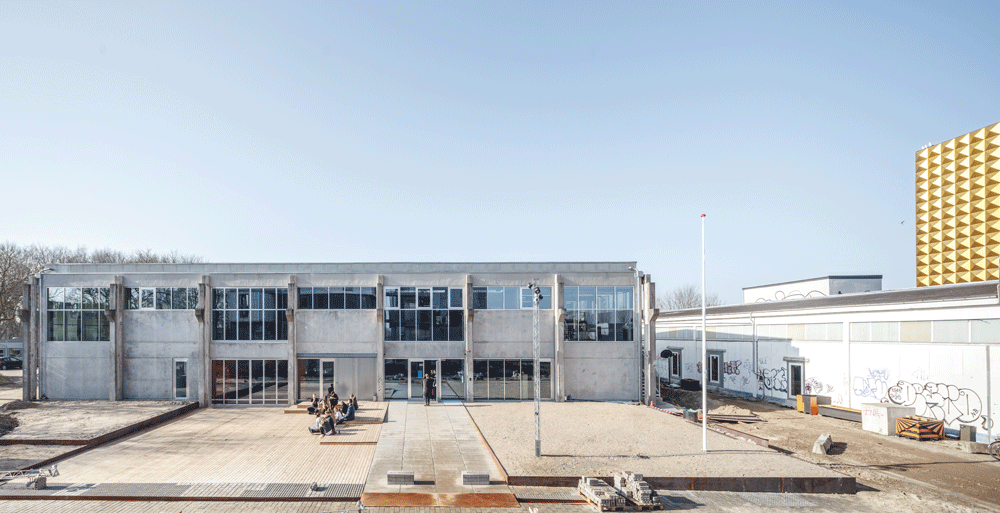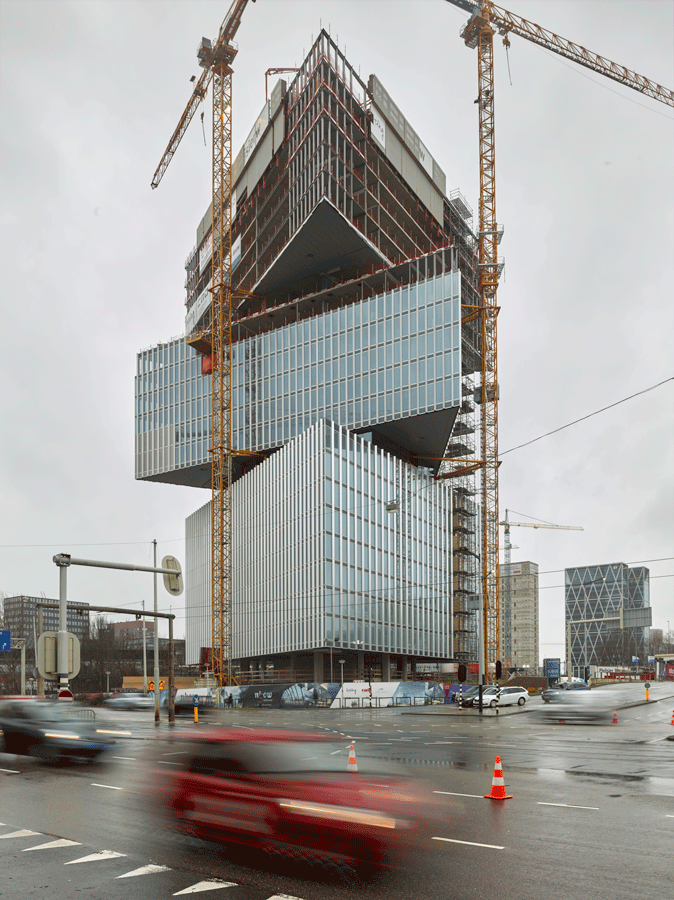Northcliffe, Western Australia
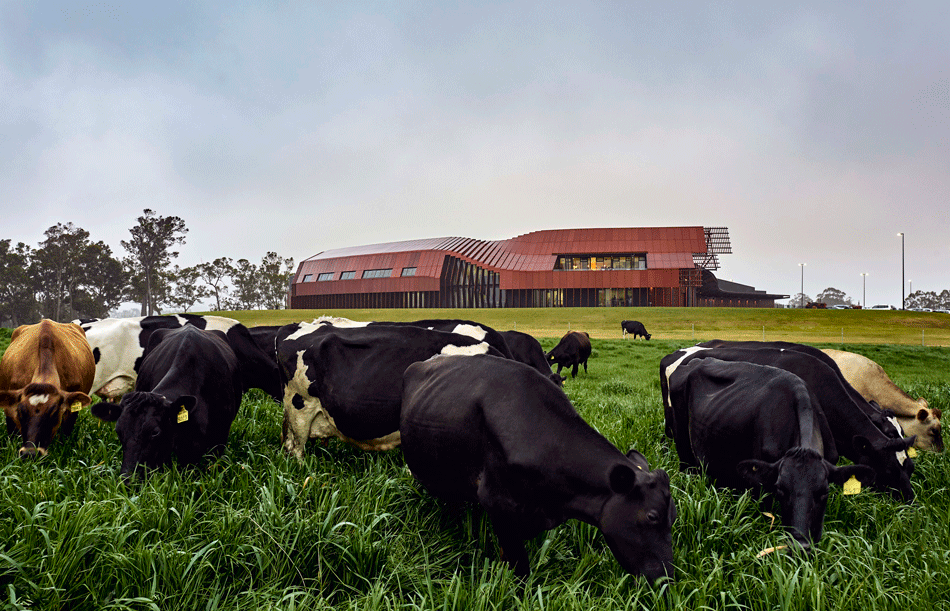
The following description is courtesy of Bosske Architecture.
The new Creamery development is a 9000sqm farm based industrial complex. It is a one-of-a-kind facility based on grass-to-gate production where all milking, processing, bottling is controlled and achieved in one location. It accommodates state-of-the-art equipment, including a 24-hour voluntary milking rotary robotic dairy with nutrition diagnostics and medical areas, all designed for the comfort and well-being of the herd. The milk is processed by low-temperature pasteurisation and packaged with automated machinery using a unique, soft, biodegradable, chalk-based Ecolean pouch. The whole operation is open to the public and on display from a central viewing gallery, demonstrating transparency and sustainable farming and processing practices.
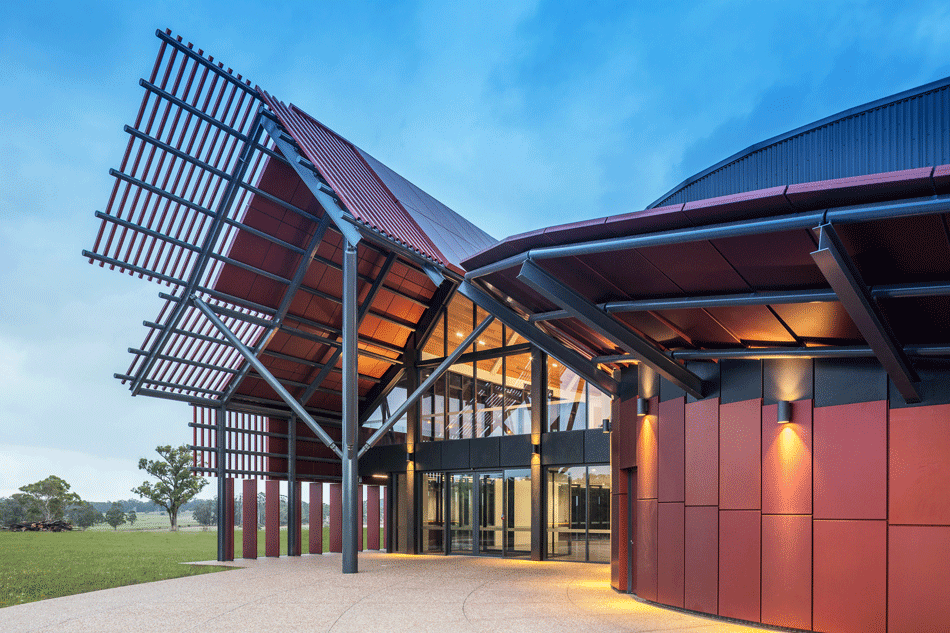
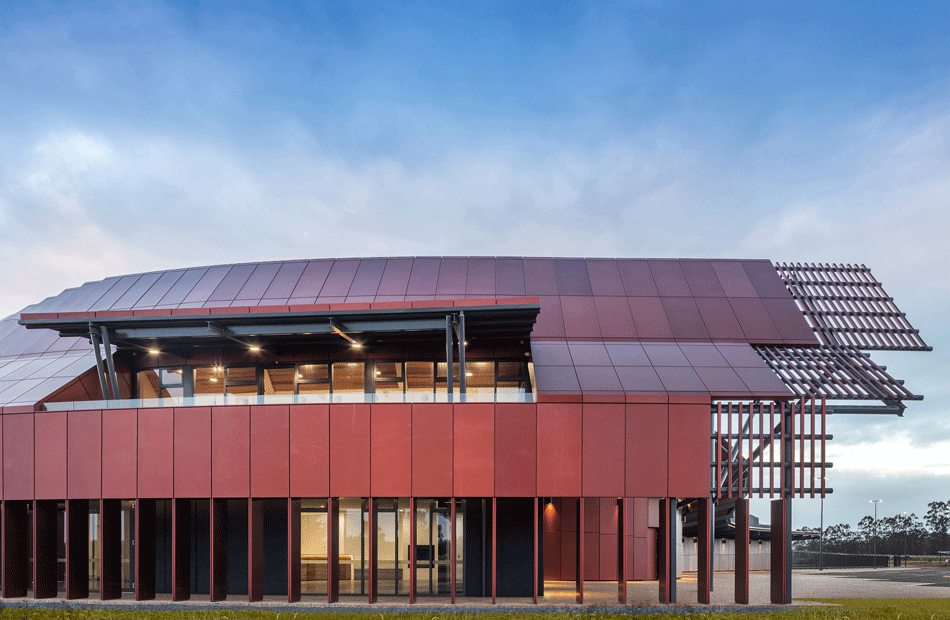
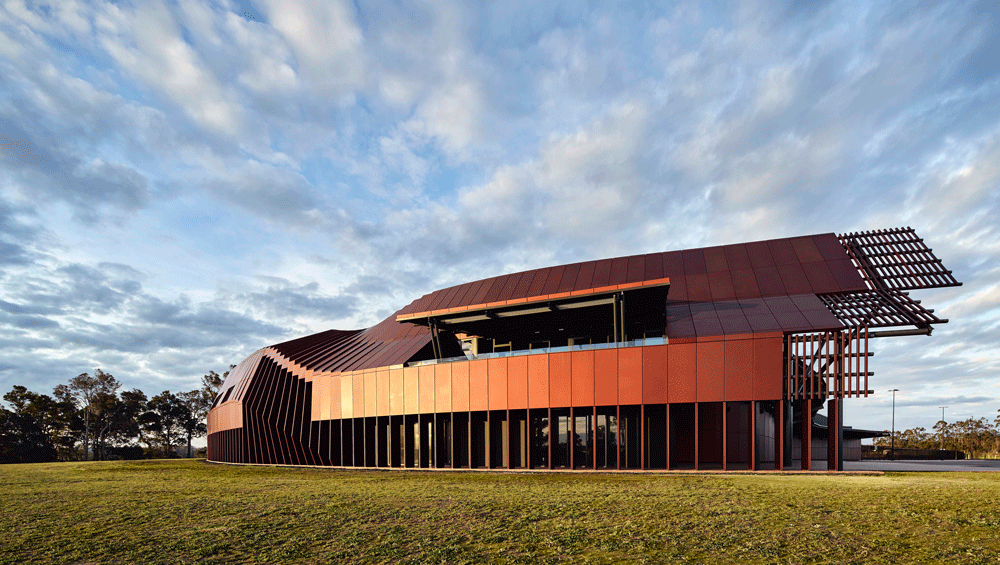
The masterplan, which initiated the project, was simply about defining a line, a boundary where all the dairy’s activities can co-exist inside. Three disparate groups converge on the location: people from the south, including workers, staff and the general public; cows from the north, who arrive uphill from the surrounding pasture; and trucks from the east away from other general traffic. It seemed appropriate that a single landscape contour formed this boundary at the apex of a small hill as this would allow water and waste to drain away from the building on all sides in this wet environment. Its form, a soft pebble shape would also act as a counter-measure to the typical sprawl of industrial infrastructure, ad-hoc building and service roads.
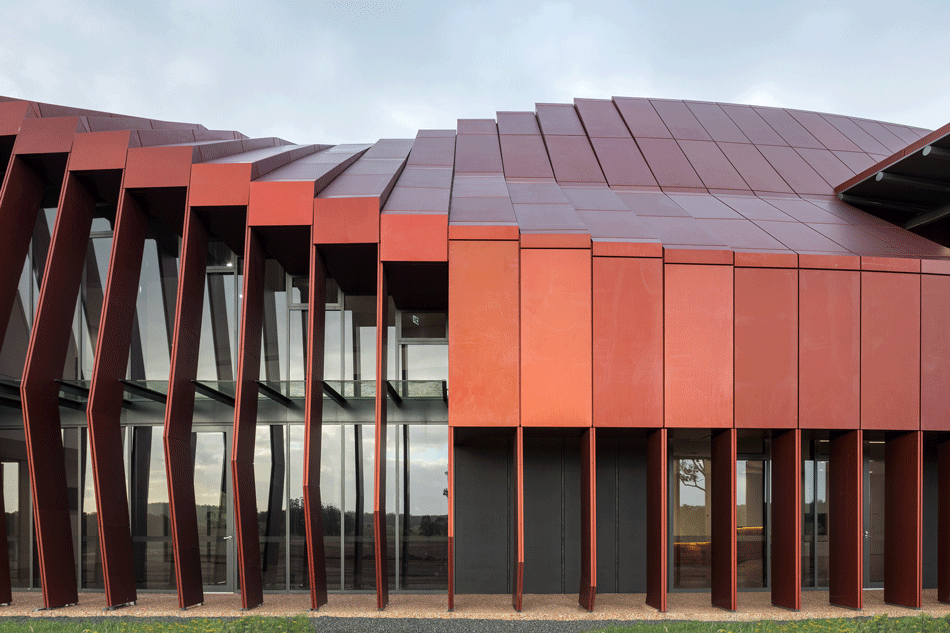
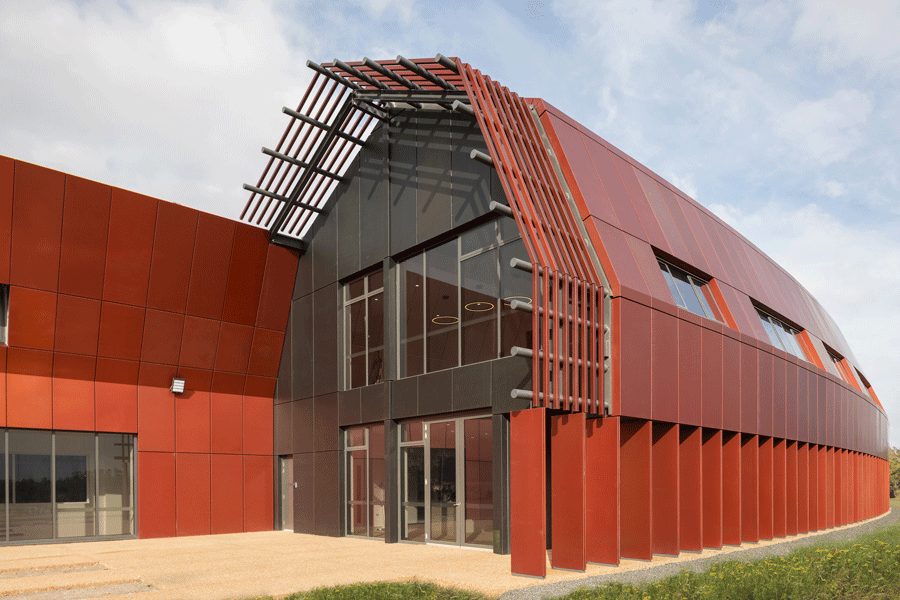
This boundary line is used to generate an architectural strategy for the main building. Conceived of as a trajectory of building form set in motion: an animated loft of set archetypal shed profiles including modern shed, Australian barn vernacular, gambrel dairy barn. These are blended into a singular long ‘super-shed’, constantly morphing along the perimeter, churning and mixing programme and operations internally. This red ‘super-shed’ is realised as the main administration building, public entry and visitor’s cafe for the whole complex. Its curving nature along the contour means that the building is always receding, diminishing the overall impression of a large building in the landscape. It also masks the main bulk processing areas which sit behind. The façade ribbons are expressed in modes of animation – slow and fast, open and closed. The façade is multi-purpose, creating sun shading, canopies, colonnade, framed views, entries and other elements which change along the building’s length.
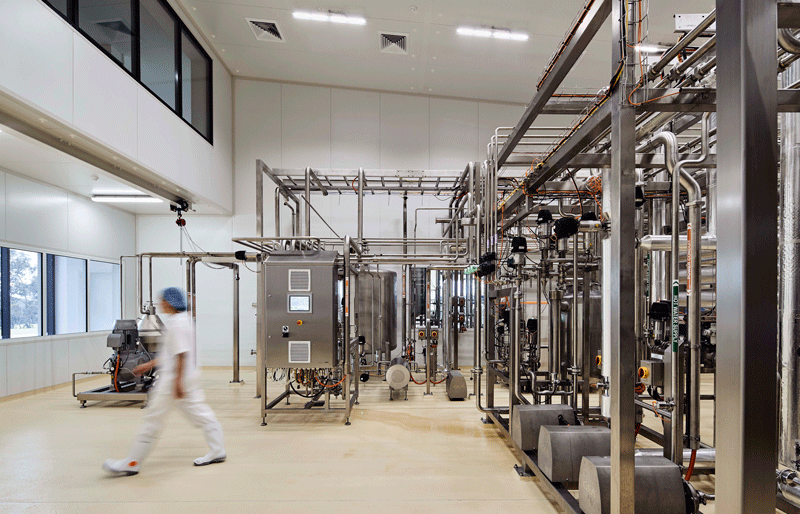
Internally the shed’s program combines a public entry space and foyer to the front, and administration and staff facilities to the back. The general public are drawn upstairs, through the buildings twist, to an internal viewing gallery for the processing areas, ending at a café overlooking farmland. The buildings processing areas and services are sheltered within a large black annex to the red shed, conceived of as a long shadow cast back across the site, where all internal operations and machinery are housed. Visual connectivity between operation areas and to the farm are accommodated within the processing areas for optimal operation efficiency.
Sustainability
The project provides a civic benefit to the small, remote town of Northcliffe. The dairy is the largest investment to date in the area, providing new jobs, infrastructure, tourism and off-shoot business into the region.
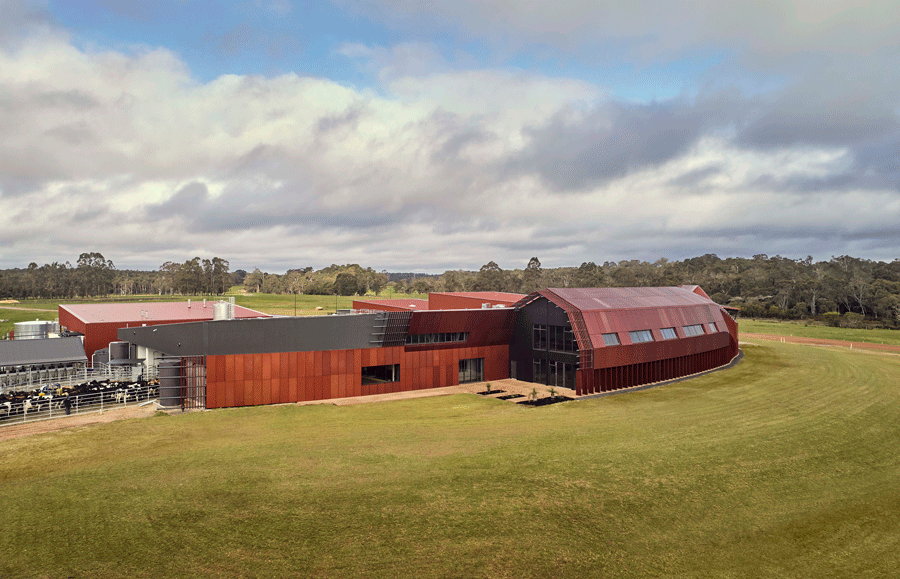
The building is set on verdant, rural farmland outside of Northcliffe. It captures this landscape from the inside, framing views from processing rooms, dairy, boardroom and offices, creating an awareness between industry and farm. The visitors experience is almost entirely within the front of house, but the actual scale and complexity of the processing areas is slowly revealed through the exhibition space along level one.
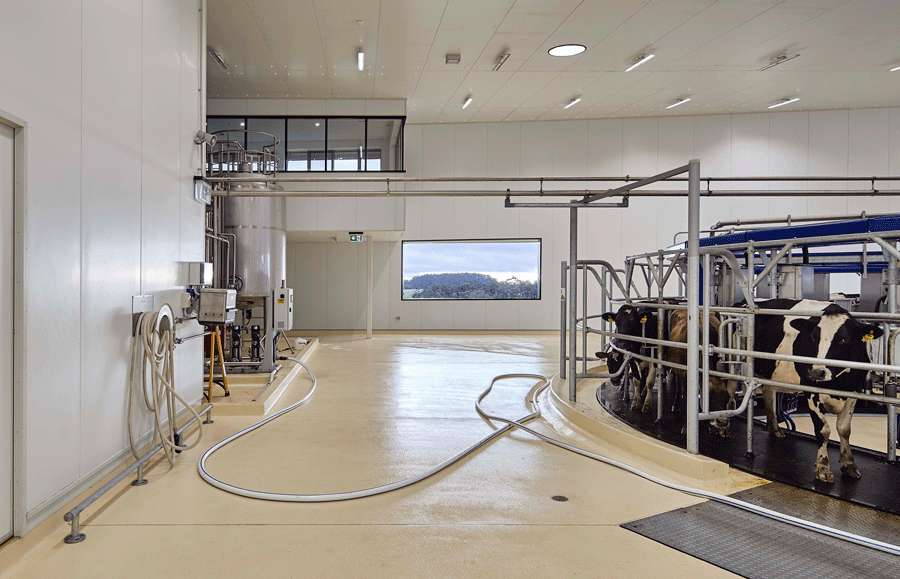
From an agricultural perspective, the facility puts the cow’s health and ‘wellbeing’ first, providing calm/safe herd environments and diagnostics to regularly check animals’ health. This follows through to their staff’s environment and wellbeing, creating consistent visual connectivity within the building from production areas to the farm.
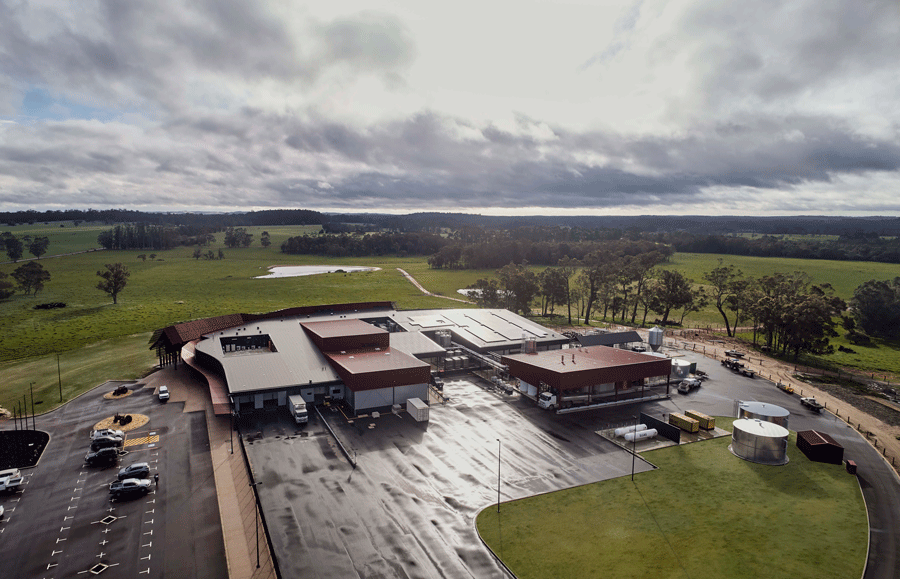
The building design minimises power consumption and use (re-use) of resources throughout the building. The sustainable elements include: a roof mounted 100kW Photovoltaic array; potable rainwater capture for processing areas; heat exchange pumps in processing; grey water reuse for cow yard wash down; double glazing to minimise direct heat transfer; LED lights; hydronic floor heating; double skin, ventilated façade systems, building management system for lighting/heating; two diesel backup generators; biodegradable chalk-based packaging.
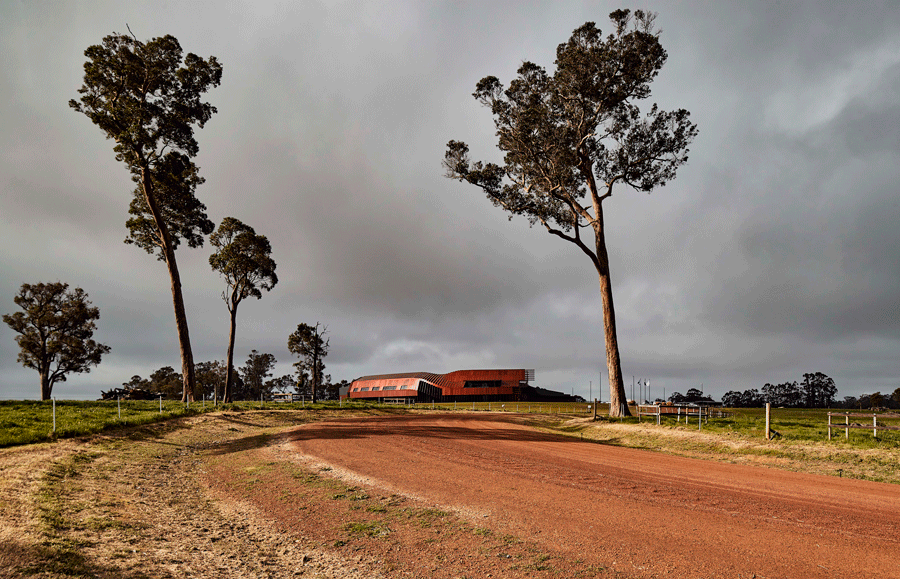
Materials were chosen based on their longevity in the harsh environment and fire performance. The construction process included approx. 90% local subcontractors. A future bio-methane plant is planned.
Project Details
Project Name: The Creamery, Bannister Downs Dairy
Client: Future Fields Pty Ltd
Project Location: Northcliffe, Western Australia
Architect: Bosske Architecture
Project type: Agricultural (Dairy); Industrial; Commercial; Tourism
Building Area: 5,500m2.
Site Area: 9,000m2
Completed: 2018, due to open to public mid-2019
Photography: Peter Bennetts or Silvertone Photography (as noted in image titles)



